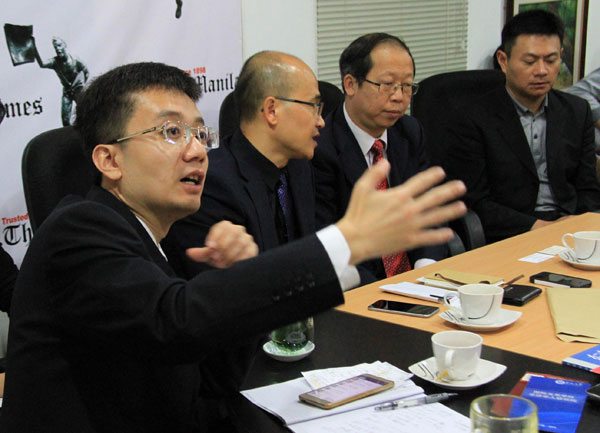CHINESE academics foresee more stable and promising Philippines-China relations with Manila’s interest to join Beijing’s “One Belt, One Road” or the Belt and Road initiative.
Chinese President Xi Jinping unveiled the initiative in 2013, but Manila was excluded following tensions over the West Philippine Sea (South China Sea).
But the Duterte administration’s foreign policy pivot toward China has made the Philippines a promising participant in the Beijing-led trade and infrastructure network, Chinese university officials told The Manila Times in a roundtable discussion on Thursday.
The “One Belt, One Road” initiative revives the ancient Silk Road trading route, seeking to link Asia, Europe and Africa through China.
“Now, your President has friendly relations with China. During President [Rodrigo] Duterte’s visit to China, the two presidents agreed for more cooperation, and join the 21st Century Maritime Silk Road,” Song Qingrun, assistant professor at the China Institutes of Contemporary Internal Relations, said.
“This is a very good and important step for our country to expand coverage,” he added.
Zhang Zhenjiang, dean of the Academy of Overseas Chinese Studies and director at Jinan University, said the initiative would promote “connectivity” between the two neighbors.
“The world really needs some new complimentary things. It’s about how to optimize the current international economic system or institution,” Zhang said. “China’s successful story is about connectivity: the way [the government] connects the people and the different regions, that’s the most important thing. And then, the whole economy will [boom].”
Song said the initiative would also lead to infrastructure projects backed by Chinese resources.
President Xi’s “One Belt, One Road” initiative has two components.
First, the “Silk Road Economic Belt,” which will bring together China, Central Asia, Russia and Europe; link China with the Persian Gulf and the Mediterranean Sea through Central Asia and West Asia; and connect China with Southeast Asia, South Asia and the Indian Ocean.
Second is the “Maritime Silk Road,” which will go from China’s coast to Europe through the South China Sea and the Indian Ocean in one route, and from China’s coast through the South China Sea to the South Pacific in the other.
The plan calls for connectivity among the countries through roads, railways, sea routes, airways, and the internet, among others, to promote unimpeded trade, people-to-people bonds, policy coordination and financial integration.
Zhang clarified that the initiative is based on mutual interests, not geography. The Chinese academics also said there was no hidden agenda to the initiative, arguing that export of production and construction capacity would be in the interest not only of China but also of countries whose financial resources and infrastructure were insufficient.


